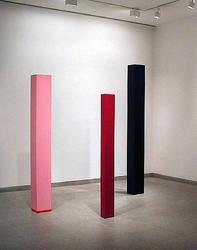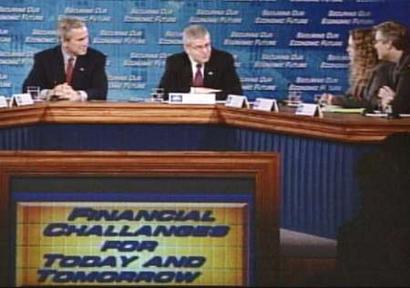Or maybe it’s greg.org: the videoblog. It’s a veritable greg.orgy: everybody come! [uh…]
On Monday, January 10th, I’m presenting a program of short films (including one of my own), video art, scenes from features, and other stuff, as part of The Reel Roundtable’s Film and Blogs series.
But more than an elaborate excuse to show and talk about my own work (don’t get me wrong, it IS that), I’m interested in seeing how a weblog functions over time as a programming/editorial/curatorial venue. The program re-imagines the weblog as a movie, or as movie-like, an event that you experience in a movie theater.
There are several ways a weblog’s video/audio content could be transmitted as a program: as you find it (serendipitously, or chronologically, as you read it (reverse chronologically) narratively, categorically, or thematically. If this had remained only a production journal, it’d become a DVD extra. I took the thematic path.
I sifted through every film, short, animation, video, video art, and TV reference on greg.org, looking for common threads and recurring themes. I narrowed the list down to the ideas–and the works related to them–that I thought would make an interesting, entertaining, and representative evening. Maybe it’s not surprising that most relate to the site’s over-arching “making of” theme. Here’s what I’ve come up with so far:
Film/Video Game Cross-Pollination: Sorry, no Matrix. I’m thinking more of the trifecta of Red vs. Blue, Gerry, and yes, Elephant.
an NYT interview with RvB co-founder Burnie Burns. an interview with Dany Wolf, Van Sant’s longtime producer previous mentions of Gerry and Elephant Artists Approach Video: aka, the making of video-based art. Methods vary from the self-consciously simple, like Gabriel Orozco’s “found” images, edited in-camera; to the bafflingly complex, like Christian Marclay’s minutely edited appropriations. There’s culturally literate/literal, like Jon Routson’s reconceived-for-TV Cremaster 4, and conceptual (like the artist whose permission I’m still awaiting).
Gabriel Orozco’s videos on Jon Routson and the future of video art Call it ‘Homage’: Or in my case, call it a substitute for film school. When I ran into “editor’s block” while cutting Souvenir (January 2003), a short about, um, well, about ironing, the solution was revealed while watching the Clooney/J. Lo seduction sequencein Out of Sight. Then on the DVD commentary, Soderbergh admitted he got the idea from a Donald Sutherland/Julie Christie sex scene in Nic Roeg’s Don’t Look Now. Shown here together for the first time, obviously…
Souvenir (January 2003) production log and related posts How a J. Lo sex scene inspires a movie about nostalgic ironing On watching Nic Roeg’s Don’t Look Now Surprise US Premiere (TBC): I’ve been working on it a while, and I’m hoping to have a special screening of a film that caught the attention of the media and filmlovers alike in 2004 (and no, it doesn’t involve Paris Hilton). Stay tuned.
There. That should be a decent couple of hours. So clear your calendars, and get on over to the Millennium Theater, 66 E 4th St, on Monday, Jan. 10th at 7:30PM.
And for details on the rest of The Reel Roundtable’s series, check out the site, or Elizabeth’s IndieWIRE blog.

 Richard Polsky does a round-up of the 2004 art market on Artnet and makes some predictions for 2005, and guess what? Of the dozens of artists he looks at, only four–Takashi Murakami, Yoshitomo Nara, Felix Gonzalez-Torres (??) and Ross Bleckner–are anticipated to go down next year. Most are going up, or are predicted to be “status quo,” which I take to mean either “they’ll go up, but I don’t know why” or “they’ll go down, but I don’t want to piss off my dealer/artist/collector friends by saying so.”
Richard Polsky does a round-up of the 2004 art market on Artnet and makes some predictions for 2005, and guess what? Of the dozens of artists he looks at, only four–Takashi Murakami, Yoshitomo Nara, Felix Gonzalez-Torres (??) and Ross Bleckner–are anticipated to go down next year. Most are going up, or are predicted to be “status quo,” which I take to mean either “they’ll go up, but I don’t know why” or “they’ll go down, but I don’t want to piss off my dealer/artist/collector friends by saying so.”

